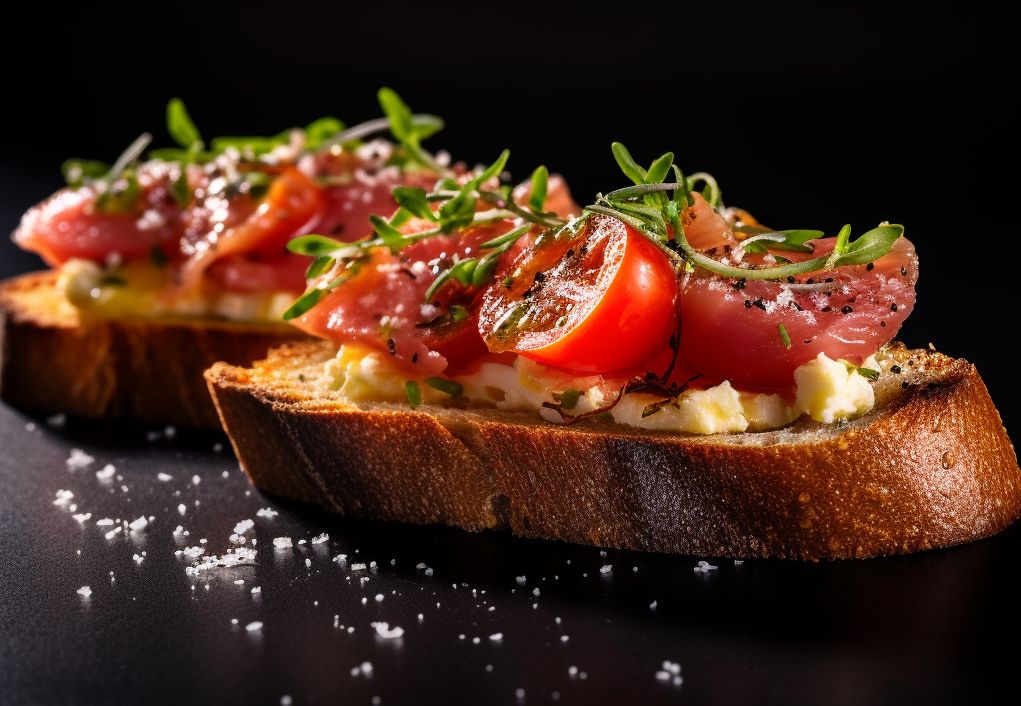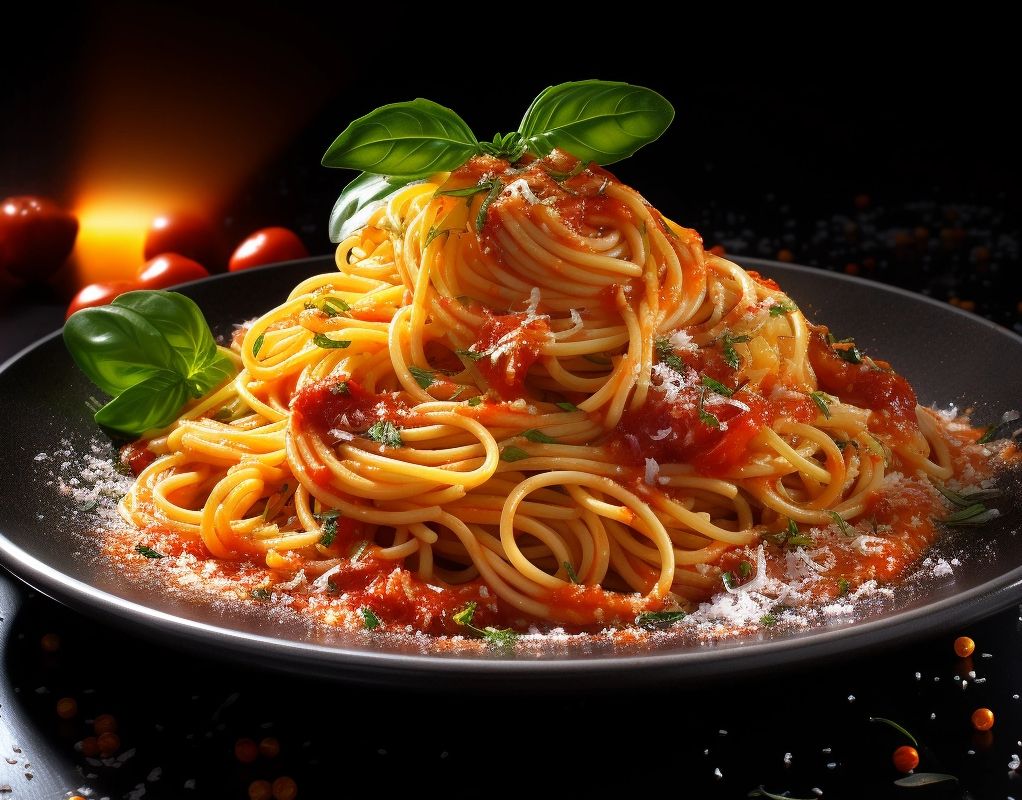Hey there, fellow travel and food enthusiasts! I’m here to take you on a mouthwatering journey through the vibrant and diverse world of European cuisine. Get ready to savor the flavor with a collection of must-try European recipe dishes that will transport you straight to the heart of Europe.
From Italian to Spanish, French to Polish, European recipes are bursting with authentic flavor and unique culinary traditions. Whether you’re craving a comforting casserole, a simple appetizer, or a tasty sandwich, these flavorful recipes are sure to satisfy your taste buds and give you an unforgettable taste of Europe.
So, get your apron on, dust off the cutting board, and join me in exploring the deliciousness of European dishes right in your own kitchen. Let’s dive into the world of European cuisine and discover the unforgettable flavors that await!
Already Vacationing in Europe or in The Planning Mode?
If you’re already vacationing in Europe or planning your next European escape, why not delve into the continent’s rich culinary tapestry? Dive deeper into Europe’s culinary treasures by joining a food tour or mastering the art at a cooking class. Then, take what you’ve learned back home to create tantalizing dishes for your family and friends, making your travel memories even more delicious.
Discover more and book your next adventure to explore authentic food tours and hands-on cooking classes. Bon appétit and happy travels!
Bruschetta – A Fresh and Simple Italian Appetizer

When it comes to Italian cuisine, bruschetta is a must-try appetizer that embodies the vibrant flavors of Italy. This deliciously simple dish is made with fresh tomatoes, basil, garlic, and good-quality bread, making it a refreshing and satisfying option for any occasion.
Enjoying Bruschetta: A Versatile Italian Classic
Bruschetta is not only a delicious appetizer, but it’s also incredibly versatile. You can customize your bruschetta by adding other ingredients such as mozzarella cheese, balsamic glaze, or even prosciutto for a twist on the classic recipe. Whether you’re hosting a dinner party or looking for a light snack, bruschetta is the perfect choice for a taste of Italy right in your own home.
Recipe
Ingredients:
- 4 mature tomatoes, finely diced
- 4 slices of artisanal bread
- 1 clove of garlic
- 4 tbsp of olive oil
- Fresh basil leaves
- Thick salt
Bruschetta Preparation:
- To create the perfect Bruschetta, combine the diced tomatoes with olive oil and let them mingle.
- Gently brown your bread slices, either on a grill or using a toaster, and once done, scrape them with the raw garlic clove.
- Arrange the garlic-infused toasted bread on a plate, layer with the tomato mixture, and garnish with a touch of salt and freshly chopped basil.
“Bruschetta is a deliciously simple Italian dish that can be enjoyed as a snack, appetizer, or antipasti.”
Seafood Paella – A Traditional European Spanish Delight – European Food At Its Best

When it comes to Spanish cuisine, one dish that immediately comes to mind is paella. This traditional Spanish delight is a vibrant and flavorful rice dish that brings together a variety of ingredients to create a truly satisfying meal. Whether you prefer seafood or a combination of chicken and chorizo, paella offers a delightful medley of flavors that is sure to impress.
At the heart of paella is the rice, which is cooked in a flavorful broth infused with saffron, giving it a rich golden color. The addition of onions, bell peppers, and a variety of proteins such as squid, prawns, mussels, or chicken and chorizo, adds depth and richness to the dish. The flavors are further enhanced with the addition of smoked paprika, which brings a hint of smokiness to the paella.
“Paella is a classic Spanish dish that brings people together. Gathered around it, people find unity and delight.”
One of the key ingredients that sets paella apart is saffron. Known as the most expensive spice in the world, saffron adds a distinct floral aroma and a subtle earthy flavor to the dish. It also gives the rice its vibrant yellow hue, making paella a visually striking dish that is as beautiful as it is delicious.
Whether you’re enjoying paella at a family gathering or hosting a dinner party, it’s a dish that is sure to impress. The combination of flavors and textures, along with the communal aspect of sharing a big pot of paella, makes it a truly memorable dining experience. So gather your loved ones, set the table, and savor the flavors of Spain with a hearty serving of paella.
Recipe
Ingredients:
- 1 onion, diced
- 1 red bell pepper, diced
- 3 cloves of garlic, finely chopped
- 1 squid tube, sliced into squares
- 10-12 jumbo prawns, uncooked
- 6-8 fresh mussels
- 1 cup of short-grain rice
- ½ cup tomato paste
- ½ teaspoon smoked paprika
- 2½ cups of fish broth (alternatively, chicken or vegetable broth)
- 1 packet of Spanish saffron (available online)
- Fresh parsley, chopped
- Lemon slices
Seafood Paella Instructions:
- In a pan, heat 5 tbsp of olive oil over medium-high heat. Add the squid pieces, season with a touch of salt, and sauté for 2 minutes. Transfer to a separate dish and set aside.
- In the same pan, sauté the onion, garlic, and red bell pepper for about 5 minutes. Incorporate the tomato paste, and smoked paprika, and season with salt and pepper. Continue to sauté for another 3 minutes.
- Return the squid to the pan, pour in the broth, and add the Spanish saffron.
- Once boiling, add the rice, ensuring it’s spread evenly throughout the pan. Let it simmer for 5 minutes without stirring.
- Introduce the prawns and mussels to the pan and allow to cook for an additional 5 minutes. Reduce the heat, occasionally shaking the pan but refrain from stirring.
- After roughly 10 minutes, when just a bit of broth remains, intensify the heat for an extra minute. This step ensures the rice at the bottom achieves the characteristic crispy texture of traditional paella.
- Allow the paella to settle for a few moments. Before serving, adorn with lemon slices and a sprinkle of fresh parsley.
Croque Monsieur: European Cuisine – A French Classic Toasted Sandwich

When it comes to French cuisine, one cannot ignore the delightful flavors of a Croque Monsieur. This classic toasted sandwich is a staple in French cafes and homes alike. With its perfect combination of cheese, ham, and a touch of Dijon mustard, it’s a simple yet satisfying treat that will transport your taste buds to the streets of Paris.
What sets the Croque Monsieur apart is the attention to detail in its preparation. The bread is buttered to perfection, giving it a crispy texture when grilled. The combination of Gruyere and Emmental cheese creates a creamy and nutty flavor that perfectly compliments the savory ham. A layer of Dijon mustard adds a tangy kick, elevating the sandwich to new heights.
“The Croque Monsieur is a true classic in French cuisine,” says Chef Antoine Dupont. “Its simplicity and deliciousness make it a favorite among locals and tourists alike. It’s the perfect option for a quick lunch or a satisfying snack.”
For those looking to indulge in a taste of France, the Croque Monsieur is an easy and accessible option. Whether enjoyed at home or in a quaint French cafe, this iconic sandwich is a must-try for any lover of French cuisine.
Recipe
Ingredients for Croque Monsieur:
- 2 pieces of your preferred bread
- 2 ham slices
- A generous amount of Gruyere cheese
- 1 tbsp of Dijon mustard
- Butter
Instructions for a Basic Croque Monsieur:
- Start by heating up your grill.
- Apply butter to one side of each bread slice. On the opposite sides, spread an even layer of Dijon mustard.
- Over the mustard side of one slice, layer the ham and sprinkle half of the Gruyere cheese. Top it with the second slice of bread, mustard side facing the ham.
- Grill the sandwich for about 5 minutes. Afterward, take it out, flip, and sprinkle the remaining cheese on top.
- Continue to grill for an additional 5 minutes or until the sandwich turns a delicious golden brown and is crisp to perfection. Enjoy your meal!
Coq au Vin – A Comforting French Chicken Casserole

When it comes to classic French cuisine, one dish that immediately comes to mind is Coq au Vin. This comforting chicken casserole is a staple in French households and brings together tender chicken, savory bacon, earthy mushrooms, and aromatic onions and carrots. What sets Coq au Vin apart is its rich and robust flavor, thanks to the addition of red wine that infuses the dish with a deep, complex taste.
To prepare Coq au Vin, start by browning the chicken pieces in a pan along with the bacon until they turn golden and crispy. Then, sauté the onions, mushrooms, and carrots until they become fragrant and caramelized. Once the vegetables are cooked, add the chicken back to the pan and pour in a generous amount of red wine. This wine acts as the base for the flavorful sauce that will slowly simmer and tenderize the chicken. As the dish cooks, the ingredients meld together, creating a deliciously savory combination.
To enhance the flavors even further, Coq au Vin is typically seasoned with aromatic herbs like thyme and rosemary, which add a hint of freshness to the dish. The result is a hearty, comforting casserole that is perfect for cold winter nights or for impressing guests with a taste of authentic French cuisine. Serve Coq au Vin with a side of crusty bread or creamy mashed potatoes to soak up the flavorful sauce.
Coq au Vin is a dish that not only warms the body but also brings people together. Its rich flavors and hearty ingredients make it a favorite amongst French households, and now you can enjoy it in your own home. The combination of chicken, red wine, bacon, mushrooms, onions, and carrots creates a symphony of tastes that will transport you to the quaint streets of France. So, why not treat yourself to a little taste of French indulgence with this comforting Coq au Vin recipe?
Recipe
Ingredients for One Pot Coq au Vin:
- 30g butter
- 12 shallots
- 250g chestnut mushrooms
- 5 chicken legs
- 2 crushed garlic cloves
- 3 chopped streaky bacon rashers
- 600ml red wine
- 2 tbsp olive oil
- Carrots
- 1.5 chicken stock cubes
- Chopped parsley for garnish
- 2 sprigs of rosemary
- 2 tsps tomato puree
- 3 sprigs of thyme
- 30g flour
- Salt and pepper, as desired
Instructions:
- In a large saucepan, heat the olive oil and butter. Once hot, add the chopped bacon and fry until it becomes crispy. Remove the bacon and set it aside.
- In the same pan, sauté the peeled shallots and mushrooms until they are browned. Once done, set them aside with the bacon.
- Add chicken legs and chopped carrots to the pan, cooking for approximately 12 minutes or until they are browned. Remove them using a slotted spoon and let them drain on paper towels.
- In the remaining fat, stir in the flour and let it cook for about 5 minutes. Meanwhile, in a separate pan, reduce the wine. Once done, combine the reduced wine, tomato puree, and chicken stock in the main pan to create a casserole base.
- Introduce the previously set aside chicken, bacon, mushrooms, and shallots back to the pan. Stir in the crushed garlic.
- Season with thyme, rosemary sprigs, salt, and pepper.
- Bring the mixture to a boil and let it simmer for 10-15 minutes with the lid on.
- Transfer the pan to a preheated oven at 180°C/gas mark 4 and let it bake for 45 minutes.
- Once cooked and tender, remove from the oven and garnish with freshly chopped parsley before serving. Enjoy!
Pierogi The Best of European Food: Poland’s Answer to European Dumplings

When it comes to Polish cuisine, one dish that stands out is pierogi. These delectable dumplings are a staple in Polish households and are loved by people all over the world. Made with a simple combination of potatoes, cheese, and flour, pierogi is the perfect comfort food that will leave you craving for more.
The process of making pierogi is a labor of love. The dough is mixed using flour, eggs, and water, then rolled out and cut into small circles. The filling, often made with potatoes and cheese, is placed in the center of each circle, then folded and sealed to create a crescent shape. Once the pierogi are ready, they are boiled until they float to the surface and then served hot with melted butter on top.
One of the best things about pierogi is their versatility. While the classic potato and cheese filling is a favorite, there are also many other options to explore. From savory fillings like sauerkraut and mushrooms to sweet fillings like berries or chocolate, pierogi can be customized to suit any taste. Whether you prefer them boiled, fried, or even baked, pierogi are a delicious treat that will transport you to the heart of Poland with every bite.
“Pierogi are the ultimate comfort food. They are a symbol of family gatherings, celebrations, and the warmth of home. Every Polish grandmother has her own recipe, passed down through generations, making each bite a taste of tradition and love.” – Chef Anna, Polish culinary expert
Recipe
Ingredients (yields approximately 30 pierogi):
- 2 cups of standard flour
- 1 room-temperature egg
- 1 cup tepid water
- 5 russet potatoes
- 1 onion
- 1 tsp of garlic essence
- 1 cup shredded Cheddar or ricotta
- Seasoning: salt & pepper
Pierogi Preparation:
- Begin by peeling and boiling the potatoes until they’re soft enough to be pierced easily with a knife. Concurrently, dice the onion and sauté it until golden.
- After cooking the potatoes, transfer them to a bowl and crush them. Incorporate the sautéed onions, cheese, garlic essence, and season generously with salt and pepper. Once combined, set this filling aside.
- In another bowl, mix flour, egg, a pinch of salt, and tepid water. Knead with your hands, adding a sprinkle of flour if the dough becomes overly sticky.
- Let the kneaded dough rest under a tea towel for about 30 minutes.
- Portion the dough into balls, roughly the size of a tablespoon. Roll these portions into thin circles on a flour-dusted surface. Keep them beneath a moist tea towel to maintain their moisture while you’re preparing the filling.
- Deposit a spoonful of the potato mixture on each dough circle, fold in half to encase the filling, and pinch the edges to seal, creating a half-moon shape. Ensure they remain covered to retain their moisture.
- Heat a pot of seasoned water until it simmers. Gently cook the pierogi in groups until they rise to the water’s surface (about 2-3 minutes).
- Once cooked, remove, drain, and present with a drizzle of warm, melted butter.
Pintxos – Quick and Easy Canapes from the Basque Region

When it comes to Spanish cuisine, one cannot overlook the delightful pintxos from the Basque region. These quick and easy canapes are the perfect bite-sized delights for any occasion. Made with a crusty baguette as the base, pintxos can be customized with various toppings to suit your taste.
One popular choice for pintxos is to use a tender pork belly, which adds a rich and savory flavor. Pair it with grilled padron peppers for a hint of heat and a touch of manchego cheese for a creamy finish. Drizzle with a little olive oil for a burst of freshness. The combination of these ingredients creates a harmonious blend of flavors that will leave your taste buds craving for more.
Whether you’re hosting a Spanish-inspired gathering at home or simply want to enjoy a taste of the Basque region, pintxos are the perfect choice. Their simplicity and versatility allow you to get creative with the toppings, making them a crowd-pleaser for both casual get-togethers and special occasions. So, why not try your hand at making these delicious canapes and transport yourself to the vibrant culinary scene of the Basque region?
The Flavors of the Basque Region in Every Bite
The Basque region of Spain is known for its rich culinary heritage, and pintxos are a true reflection of its flavors. These bite-sized canapes showcase the region’s love for fresh ingredients, bold flavors, and unique combinations. With every bite, you can taste the passion and creativity that goes into Basque cuisine.
What makes pintxos even more special is the social aspect surrounding them. In the Basque region, it is common to gather with friends and family at local bars, where a wide variety of pintxos are displayed on the counters. You can pick and choose your favorites, creating a personalized tasting experience. This communal way of enjoying food adds an extra layer of enjoyment and connection to the Basque culinary tradition.
So, whether you’re an avid food lover or simply looking to try something new, give pintxos a try. They are the perfect introduction to the flavors of the Basque region and will leave you wanting more.
“From the heart of the Basque, Pintxos are bite-sized tales of tradition — quick, delicious, and full of soul.”
Recipe
Ingredients:
- Crusty baguette
- Pork belly (alternative: chorizo sausage)
- Padron peppers
- Manchego cheese
- Olive oil
- Lemon zest
- Salt
- Paprika
- Garlic oil or garlic paste
- Toothpicks
- Parsley
How to make pork belly (or chorizo) pintxos:
- Preheat the oven to 180°C.
- Slice the crusty baguette into bite-sized pieces and arrange on a baking tray.
- Drizzle the baguette slices with olive oil and toast in the oven for 5-6 minutes or until slightly golden.
- Cut the pork belly into bite-sized strips, approximately the same width as the baguette slices.
- Halve the Padron peppers and deseed where possible.
- In a bowl, mix pork slices with paprika, garlic paste, salt, pepper, and lemon zest until evenly coated. For chorizo, skip the addition of salt, garlic paste, and paprika.
- Heat olive oil in a pan and sear both the pork belly and Padron peppers over medium heat until the pork turns a golden brown on both sides. Flip occasionally. If using pre-cooked chorizo, cook for only a few minutes. The peppers should appear wilted and browned.
- Slice the manchego cheese into thin squares or rectangles.
- To assemble the pintxos: Start with the baked baguette slice, place a piece of manchego, followed by the seared pork, and topped with a padron pepper. Season with lemon zest and sea salt as per taste.
- Garnish with chopped parsley. Your pintxos are now ready to be enjoyed!
Explore the Flavors of Europe in Your Own Kitchen: From Eastern European Food to Swedish Meatballs
If you’re craving a culinary adventure without leaving the comfort of your own home, look no further than the flavors of Europe. With diverse cuisines from Italy, Spain, France, Poland, and more, there’s a world of taste waiting to be explored. By trying out different recipes from various European cuisines, you can bring the authentic flavors of Europe into your kitchen.
European Cuisine: A Melting Pot of Flavors
European cuisine is renowned for its quality and rich and diverse flavors. Each country has its own unique culinary traditions and ingredients, offering a tantalizing experience for your taste buds. From the fragrant herbs and tomatoes of Italian dishes to the bold and spicy flavors of Spanish cuisine, European dishes are sure to delight any food lover.

One of the joys of exploring European flavors is the use of fresh and authentic ingredients. From juicy Mediterranean olives to creamy French cheeses and aromatic Polish spices, the quality of the ingredients used in European recipes elevates the taste and creates an unforgettable dining experience.
Embrace European Inspiration in Your Cooking
Bring the taste of Europe into your home by trying your hand at traditional European recipes. Whether you’re a seasoned chef or a novice in the kitchen, there’s a recipe for everyone. From simple appetizers like bruschetta to hearty main courses like paella, there’s a dish to suit any occasion.
Get creative and add your own twist to recipes, experimenting with flavors and ingredients to make them your own. Embrace the spirit of European cooking by savoring each bite and enjoying the process of creating delicious meals for yourself and your loved ones.
Unleash Your Inner Chef and Savor the Best of Europe
The beauty of exploring European flavors in your own kitchen is that you have the freedom to indulge in the best of Europe whenever you want. Whether you’re craving a cozy French casserole, a zesty Italian pasta, or a comforting Polish dumpling, the possibilities are endless.
So, put on your chef’s hat, gather your ingredients, and embark on a culinary journey through Europe. Explore the flavors, try new recipes, and savor every bite as you immerse yourself in the rich and delicious world of European cuisine. It’s time to unleash your inner chef and bring the taste of Europe to your table.
Conclusion: European Food Delights – Delectable Flavors of European Cuisine, Eat The Best Pizza, Cabbage Rolls, Stew or Sauerkraut
As I conclude this culinary journey through Europe, I hope you’re left with a deep appreciation for the rich and diverse flavors that each country has to offer. From the fresh and simple bruschetta of Italy to the comforting coq au vin of France, and the traditional pierogi of Poland, each dish carries a story, a tradition, and a unique taste that transports you to another place.
By cooking and savoring these authentic European dishes, you have found a way to experience the vibrant cultures and culinary traditions right from your own kitchen. It’s a way to connect with the world and satisfy your wanderlust, even when travel is not an option. The flavors of Europe bring a sense of adventure and discovery into your everyday life.
If you want to embark on a culinary adventure, I encourage you to explore these European recipes. From the tantalizing appetizers to the comforting casseroles, each dish has the power to transport you to a different corner of Europe. So go ahead, embark on a journey of taste, and immerse yourself in the flavors of Europe. Bon appétit!
FAQ: From Western to Eastern Europe: Italy, Hungary, Croatia, Czech, Bulgaria, France, Germany – European Cuisine Tantilizes The Taste Buds

Q: What are European dishes?
A: European dishes refer to the traditional and popular foods that are commonly consumed in European countries.
Q: Which European countries are known for their cuisine?
A: Some European countries known for their cuisine include the Czech Republic, Hungary, Croatia, Bulgaria, and many more.
Q: What is a traditional dish in the Czech Republic?
A: One of the traditional dishes in the Czech Republic is “bryndzové halušky”, which consists of potato dumplings topped with sheep cheese and bacon.
Q: What is the best dish to eat in Hungary?
A: One of the best dishes to eat in Hungary is “goulash”, a traditional Hungarian soup made with meat and vegetables.
Q: What is a popular dish in Croatia?
A: A popular dish in Croatia is “pašticada”, which is a slow-cooked beef dish served with gnocchi or potatoes.
Q: What is the national dish of Bulgaria?
A: The national dish of Bulgaria is “banitsa”, a pastry made with whisked eggs and layers of filo dough filled with various ingredients such as cheese, spinach, or pumpkin.
Q: What is commonly used in European dishes?
A: European dishes often include ingredients such as meat, sour cream, whipped cream, grated cheese, and tomato sauce.
Q: What is a traditional side dish in the Czech Republic?
A: A traditional side dish in the Czech Republic is “knedlíky”, which are dumplings made from bread or potato dough. They are often served with meat dishes.
Q: What is a popular street food in Hungary?
A: In Hungary, a popular street food is “langos”, which is a deep-fried bread topped with various toppings such as sour cream, cheese, and garlic.
Q: What is a famous dish in Croatia?
A: A famous dish in Croatia is “ćevapi”, which are small grilled sausages made from ground meat. They are often served with flatbread and onions.
Q: What is fish and chips?
A: Fish and chips is a popular variety of fast food in European countries, especially in the United Kingdom. It consists of deep-fried fish fillets and home fries.
Resources:


















